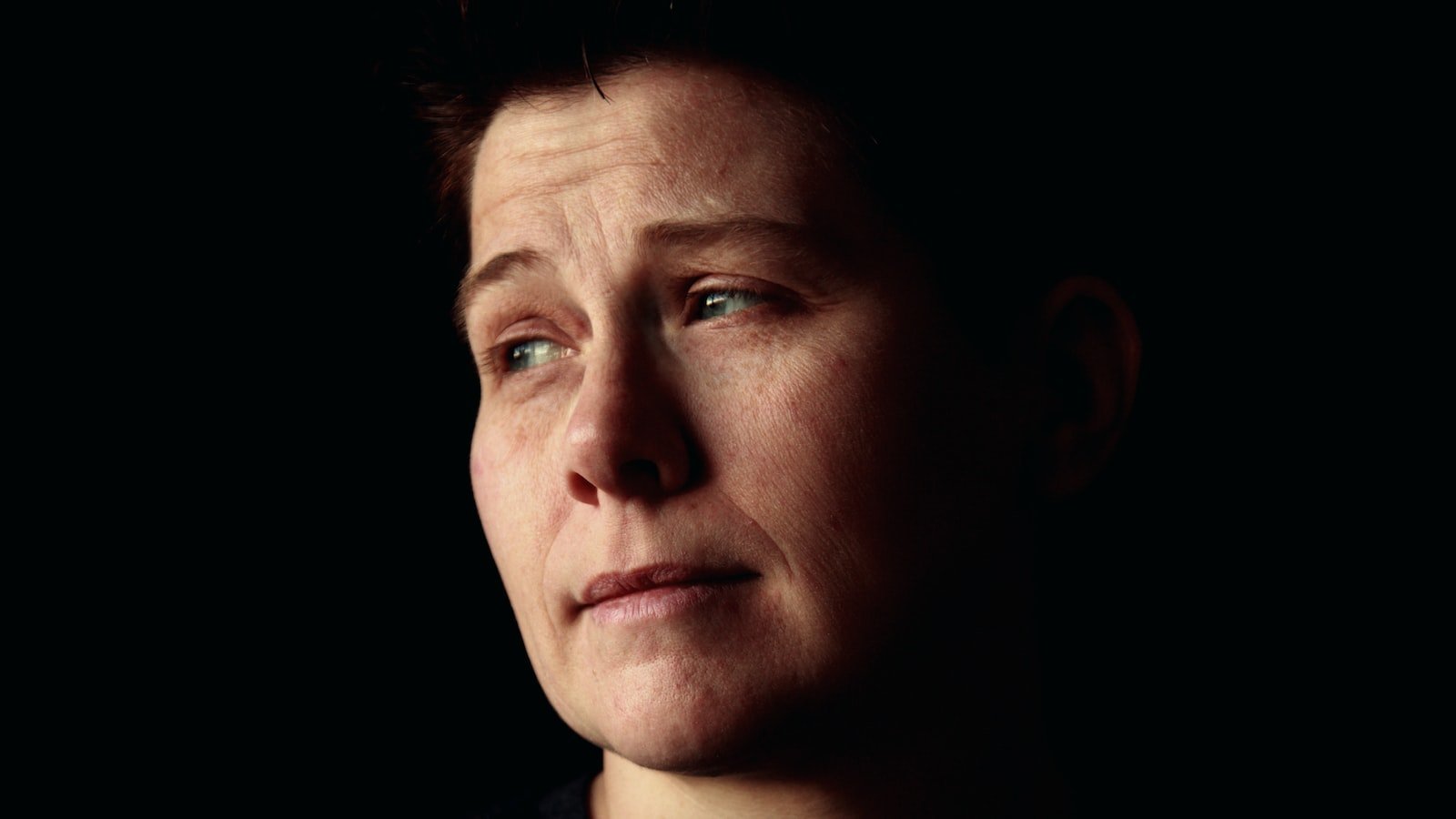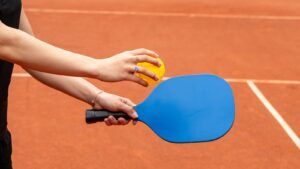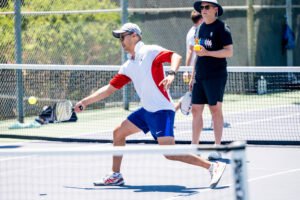Pickleball, a hybrid of tennis, badminton, and ping pong, has etched its way into the hearts of sports enthusiasts worldwide. With its soaring popularity, this rapidly growing sport has captured the attention of players of all ages and skill levels. However, as we delve into the realm of competitive pickleball, a fascinating question arises: does gender play a significant role in shaping the dynamics of this game? Unveiling the complex interplay between athleticism, strategy, and societal expectations, this article explores the nuanced impact of gender within the captivating realm of competitive pickleball. Lace your shoes, tighten your grip, and join us as we navigate the extraordinary world where pickleball and gender collide.
Table of Contents
- The Influence of Gender Stereotypes on Participation in Competitive Pickleball
- Exploring Gender Differences in Performance and Skill Development
- Addressing Gender Barriers in Competitive Pickleball: Strategies for Inclusion
- Promoting Equality and Fairness: Gender-Neutral Policies in Pickleball Competitions
- Empowering Women in Competitive Pickleball: Advocating for Representation and Recognition
- Q&A
- To Conclude

The Influence of Gender Stereotypes on Participation in Competitive Pickleball
In the world of competitive pickleball, gender stereotypes play a significant role in determining the participation levels of individuals. Despite efforts to break free from traditional norms, these stereotypes continue to influence decisions and shape the landscape of the sport. It is important to understand the impact of these gender biases and how they can hinder or enable equal participation.
The Influence of Gender Stereotypes:
1. Limited Expectations: Historically, women have been seen as less physically capable or competitive than men, leading to lower expectations placed upon them. This perception often discourages women from participating in competitive pickleball, feeling that they may not measure up to the skill level deemed necessary.
2. Cultural Conditioning: Societal norms and cultural conditioning contribute to the perpetuation of gender stereotypes. From a young age, girls are often steered towards more “feminine” activities, while boys are encouraged to explore competitive sports. This divide continues to shape the demographics of pickleball players, with a disproportionately low number of women participating.
3. Lack of Representation: The underrepresentation of women in competitive pickleball can create a sense of exclusion and discourage other women from joining. When individuals do not see themselves reflected in the sport or lack role models they can relate to, it becomes increasingly difficult to envision themselves as active participants.

Exploring Gender Differences in Performance and Skill Development
When it comes to performance and skill development, it is important to understand that gender differences can play a significant role in shaping outcomes. While it is not to say that one gender is superior to another, there are distinct characteristics that may influence the way individuals from different genders approach learning and performance.
1. Cognitive Differences: Research suggests that there might be inherent cognitive differences between males and females. It tends to indicate that women typically have higher verbal abilities, while men exhibit better spatial skills. However, it is vital to remember that these differences, if any, reflect broad trends and do not imply that an individual’s abilities are limited by their gender.
2. Socio-cultural Factors: Various socio-cultural factors contribute to the development of skills and performance differences between genders. Historical disparities in opportunities, societal expectations, and biases can shape the way individuals perceive their abilities. Efforts must be made to create an inclusive environment that promotes equal access and eliminates gender-based stereotypes.
3. Nurturing Talent Equally: It is crucial to focus on nurturing talent regardless of gender. By providing equal opportunities, encouragement, and support, individuals can overcome any perceived gender-related obstacles and excel in their chosen fields. Recognizing and celebrating diversity can benefit not only the individuals themselves but also society as a whole.
By acknowledging and understanding the potential gender differences in performance and skill development, we can create an environment that empowers individuals to reach their fullest potential, irrespective of their gender. Breaking stereotypes and embracing diverse perspectives will lead to a more inclusive and progressive society where talent can thrive.
Addressing Gender Barriers in Competitive Pickleball: Strategies for Inclusion
In the world of competitive pickleball, addressing gender barriers is paramount to fostering an inclusive and diverse environment. By implementing strategic measures, we can create opportunities for individuals of all genders to thrive in this exciting sport. Here are some effective strategies for breaking down gender barriers in competitive pickleball:
1. Promoting education and awareness: One of the first steps towards inclusivity is through education. Conduct workshops and webinars to raise awareness about gender inequalities and stereotypes in pickleball. Encourage players to challenge traditional gender roles by actively participating in discussions and sharing personal experiences. By fostering a culture of understanding, we can work towards dismantling barriers.
2. Encouraging mixed-gender tournaments: To enhance inclusivity, organize mixed-gender tournaments that provide equal opportunities for players of all genders to compete. These events create an atmosphere where players can showcase their skills regardless of gender, fostering healthy competition and unity within the pickleball community. Offering equal prize money and recognition for the top performers can further incentivize participation.
3. Mentorship and support programs: Establish mentorship programs, where experienced players can guide and support players of all genders in their journey. This not only helps develop skills but also promotes a sense of camaraderie and inclusion. Providing resources and mentorship opportunities specifically targeted towards women and gender minorities can help address the existing gender gap, ensuring a more balanced and diverse player base.
By adopting these strategies, we can actively work towards breaking gender barriers in competitive pickleball, fostering an environment that celebrates diversity and provides equal opportunities for all players. Let’s create a future where everyone feels encouraged and empowered to embrace the sport, regardless of their gender.
Promoting Equality and Fairness: Gender-Neutral Policies in Pickleball Competitions
Creating an environment that promotes equality and fairness is essential in any competitive sport, and that’s why gender-neutral policies are becoming increasingly important in pickleball competitions. By implementing such policies, we can ensure that everyone, regardless of gender, has an equal opportunity to participate and succeed.
One way to promote gender neutrality is by establishing mixed-gender teams. This not only encourages collaboration and diversity but also showcases the different skill sets and strategies individuals bring to the game. By breaking away from traditional gender divisions, pickleball competitions become more inclusive and create a level playing field for all athletes.
Furthermore, gender-neutral policies enable individuals to compete based on their skills and abilities rather than predetermined assumptions about their gender. Removing gender-specific regulations allows participants to focus solely on their performance, cultivating an environment that prioritizes meritocracy.
We believe that by embracing and implementing gender-neutral policies, pickleball competitions can inspire increased participation, foster a sense of belonging for all players, and ultimately contribute to the advancement of equality and fairness in the sports arena.
Empowering Women in Competitive Pickleball: Advocating for Representation and Recognition
In the fast-paced world of competitive pickleball, a sport that has gained tremendous popularity in recent years, it is imperative to shine a light on the efforts being made to empower women players. Women have long been underrepresented in the sport, both in terms of participation and recognition. However, through tireless advocacy, dedicated organizations, and a collective spirit, women are finally starting to gain the representation and recognition they deserve.
One of the key aspects of empowering women in competitive pickleball is creating a supportive and inclusive environment. Women players face unique challenges, from gender bias to societal expectations, that can hinder their progress and success. By fostering an atmosphere where women feel safe, encouraged, and valued, we can empower them to excel and elevate the sport to new heights.
To drive this empowerment forward, it is essential to advocate for increased representation and recognition of women players. This can be achieved through various means, such as hosting women-only tournaments, providing equal prize money, and actively promoting diversity in media coverage. By challenging the status quo and celebrating the achievements of women in pickleball, we can inspire a new generation of female players and break down the barriers that have held them back for far too long.
Advocating for Representation and Recognition: Key Steps
- Promoting women-focused initiatives: Establishing women-focused initiatives and programs that provide mentorship, coaching, and resources to empower women in their pickleball journey.
- Building partnerships: Collaborating with various stakeholders, such as pickleball associations, sponsors, and tournament organizers, to ensure gender equality in all aspects of the sport.
- Encouraging media coverage: Proactively engaging media outlets to showcase the talent and achievements of women pickleball players, shining a spotlight on their skills and contributions to the sport.
- Educating and raising awareness: Conducting workshops, seminars, and campaigns to raise awareness about the barriers faced by women in competitive pickleball, while also highlighting the benefits of gender diversity.
- Creating role models: Recognizing and celebrating the achievements of successful women pickleball players who can serve as role models and inspire others to pursue their passion for the sport.
By advocating for representation and recognition, and by empowering women in competitive pickleball, we can create a level playing field where all players can thrive. Together, let us champion gender equality and pave the way for future generations of women to make their mark in this exhilarating sport.
Q&A
What is the role of gender in competitive pickleball?
Gender plays a significant role in competitive pickleball as it determines the divisions in which players compete. Typically, there are separate divisions for men and women to ensure fair and balanced competition.
Why are there separate divisions for men and women in competitive pickleball?
Having separate divisions for men and women allows for a level playing field, as physical differences between genders can affect gameplay. This segregation ensures fair competition and encourages more people to participate.
Can men and women compete against each other in competitive pickleball?
Yes, in some instances, men and women can compete against each other in mixed doubles events. However, these mixed events are optional and usually organized separately from the traditional gender-specific divisions.
Are there differences in gameplay between men and women in competitive pickleball?
While there may be variations in playing style and strategy, there is no inherent difference in the rules or techniques based on gender. Men and women can both excel at pickleball based on skill, agility, and experience.
Does gender affect overall performance in competitive pickleball?
Performance in competitive pickleball is primarily determined by individual skill, fitness, and training. While there may be physiological differences between men and women, it is the players’ abilities and dedication that ultimately determine success on the court.
Is there an opportunity for transgender athletes in competitive pickleball?
Many pickleball organizations have inclusive policies and welcome transgender athletes to compete. Guidelines and accommodations may vary, but efforts are made to ensure fair participation for everyone, regardless of gender identity.
Do gender stereotypes affect participation in competitive pickleball?
Gender stereotypes can influence participation in any sport, including pickleball. However, the sport encourages inclusivity and strives to break down these barriers, promoting equal opportunities and fair representation for all players, regardless of gender.
What can be done to promote gender equality in competitive pickleball?
Promoting gender equality in competitive pickleball involves raising awareness, encouraging participation, and providing equal resources and opportunities for both men and women. Organizing mixed events, fostering a supportive environment, and celebrating achievements regardless of gender are vital steps towards achieving equality in the sport.
To Conclude
As we bid adieu to the spirited world of competitive pickleball, we find ourselves contemplating the intricate dance of gender within this exhilarating game. From every flick of the wrist to the strategic footwork, the role of gender showcases an awe-inspiring tapestry of skills, strength, and pure passion.
Throughout our journey, we’ve delved deep into the dynamic matches, witnessing the harmonious blend of masculinity and femininity on the court. Time and time again, players have shattered stereotypes, smashing with sheer power or embracing finesse with a gentle touch. Their unique prowess has painted a vivid picture of the limitless potential residing within each athlete, irrespective of their gender.
On this court, gender ceases to be a defining factor. It stands as a mere whisper in the wind, as players embark on an exploration of ability, technique, and sheer willpower. The spirit of competition intertwines with camaraderie, fostering an atmosphere where respect triumphs, and excellence knows no bounds.
Beyond the confines of traditional roles, we have discovered that pickleball is a realm where athleticism reigns supreme. It is a sport that reveres agility, strategy, and the insatiable hunger for victory. The bristles of the paddle know no gender, woven skillfully into a force that transcends societal norms and expectations.
Gender, in its infinite variations, serves as a vibrant thread that embellishes the magnificent tapestry of competitive pickleball. It is a mosaic seamlessly pieced together, with each player’s unique contribution enriching the game’s collective identity. Strength, resilience, grace, and finesse – these attributes know no gender boundaries, uniting athletes in a shared pursuit of glory.
As we draw the final stroke on this contemplative canvas, we invite you to revel in the grand symphony that is competitive pickleball. Whether you find yourself immersed in the rapidly pulsating courtside energy or captivated by the narratives that unfold, remember that gender is but a brushstroke that adds to the masterpiece of this timeless game.
Now, dear reader, let us raise a toast to the boundless spirit of competition, as we cherish the role of gender in the unifying realm of pickleball. May it continue to propel this sport to new heights and inspire future generations of players to embrace their own unique path, defying limitations, and making their mark in the ever-evolving tapestry of pickleball excellence.
As an affiliate, my content may feature links to products I personally use and recommend. By taking action, like subscribing or making a purchase, you’ll be supporting my work and fueling my taco cravings at the same time. Win-win, right?
Want to read more? Check out our Affiliate Disclosure page.




